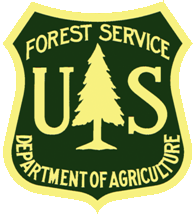
BMAP is a Forest Service science-management collaboration with the goals of:
- Increasing climate change awareness;
- Assessing vulnerability of cultural and natural resources; and
- Developing science-based adaptation strategies and incorporating them into management of federal lands in the Blue Mountains
BMAP News
-
2017: Our General Technical Report is available.
Halofsky, J.E.; Peterson, D.L. 2017. Climate Change Vulnerability and Adaptation in the Blue Mountains Region. Gen. Tech. Rep. PNW-GTR-939. Portland, OR: U.S. Department of Agriculture, Forest Service, Pacific Northwest Research Station. 344 p. doi:10.2737/PNW-GTR-939. -
April 2018: BMAP featured in Climate Services Special Issue
Assessing and adapting to climate change in the Blue Mountains, Oregon (USA) Edited by Jessica Halofsky, David Peterson Volume 10, Pages 1-72 (April 2018)
View/Download entire issue (PDF, 3.7MB)
Project Overview
Approach
The BMAP is a science-management partnership among the U.S. Forest Service Pacific Northwest Research Station, Pacific Northwest Region, Oregon State University, and resource managers in the Wallowa-Whitman, Umatilla, and Malheur National Forests. The partnership builds on the success of two similar climate change partnerships in the Olympic Peninsula and in the North Cascades, Washington (North Cascadia Adaptation Partnership). These efforts provide a foundation for climate change adaptation work in on U.S. Forest Service land.
Scientific literature and expert knowledge will be used to assess vulnerability to climate change. For each resource sector – hydrology and access, fisheries, and vegetation and disturbance – managers will identify strategies (general approaches) and tactics (on-the-ground actions) for adapting resources and management practices to climate change. The final product of the BMAP process will be a general technical report. Resource managers can use the publication as a state-of-science reference for addressing climate change and as a source of adaption options.
Focus Area
The Blue Mountains region is climatologically and ecologically diverse, and although each national forest has a specific cultural and political context, similarities in historical resource use, recent ecological disturbance, and management objectives define a relatively coherent biogeographic region. The BMAP is focused on the federal land base within the Blue Mountains. The area, covering 2.14 million hectares, includes the Wallowa-Whitman, Umatilla, and Malheur National Forests. The three administrative units include seven wilderness areas and hundreds of kilometers of wild and scenic rivers.
Similar geologic, cultural, and ecological histories unite the region. The geomorphology of the Blue Mountains was strongly influenced by glaciation and volcanic deposition. Native Americans historically inhabited and used the area. Following Euro-American settlement, the Blue Mountains experienced extensive sheep and cattle grazing and, later, a strong timber economy. Elevation gradients (3,000m range), soil type, and ecological disturbance have fostered ecological communities ranging from ponderosa pine and woodlands to dense true fir stands and high alpine meadows. Periodic and extensive outbreaks of mountain pine beetle, spruce budworm, and tussock moth occurred throughout the region in the 1900s. Management across the three administrative units has sought to respond to ecological disturbances and restore fire-prone ecosystems. Congressional designation of seven wilderness areas within the three national forests has further coalesced management objectives. In addition, the shared Blue Mountains Forest Plan Revision (in press) unites the three national forests.
Assessment & Planning
The BMAP is currently working on vulnerability assessment and adaptation planning for the Blue Mountains Region. Scientists from the Pacific Northwest Research Station and Oregon State University, Pacific Northwest Region specialists, and national forest resource managers are currently working to assess exposure, sensitivity, and adaptive capacity of three primary resource sectors - hydrology and access, fisheries, and vegetation and disturbance. After the vulnerability assessment is complete mid-2014, workshops with resource managers in the three administrative units will help to identify adaptation options. Workshops will focus on strategies (general approaches) and tactics (on-the-ground actions) for adapting to climate change. Participants will also identify barriers and opportunities for implementing these strategies and tactics into current projects, management plans, partnerships, regulations, or policies. The vulnerability assessment and adaptation options will be described in a Forest Service general technical report.
Preliminary Vulnerability Assessments
- Effects of Climatic Variability and Change on Climate
- Effects of Climatic Variability and Change on Vegetation
- Effects of Climatic Variability and Change on Water
- Effects of Climatic Variability and Change on Fisheries
Presentations (presenter indicated by *):
- Reshaping Nature: Climate Change in the Blue Mountains and Beyond
Dave Peterson* - Climate Change and the Blue Mountains
John Stevenson* & Kathie Dello - An overview of climate change impacts on streamflow for the Blue Mountains
Gordon E. Grant*, Mohammad Safeeq, Sarah Lewis & C. Naomi Tague - Blue Mountains Adaptation Partnership: Hydrologic Projections
Charlie Luce* - BMAP Climate Change and Hydrology -- Management Perspectives
Kate Day* and Caty Clifton* - Blue Mountains Adaptation Partnership: Effects of Climate Change on Fisheries
Dona Horan, Kathy Ramsey, Deb Konnoff, John Chatel, Dan Isaak*, and Gordie Reeves - Effects of Climatic Variability and Change on Vegetation and Disturbance in the Blue Mountains
Becky Kerns, John Kim*, and Dave Peterson - MC2 (Dynamic Vegetation Model) Simulation of Blue Mtns Ecoregion, OR
John Kim, David Conklin, Becky Kerns*, Jessica Halofsky, G. Stephen (Bear) Pitts, Ray Drapek, Michelle Day
Partners & Funding
Partners
Funding
This project is supported in part by funding from the National Oceanic and Atmospheric Administration to the Pacific Northwest Climate Impacts Research Consortium and Oregon State University.

